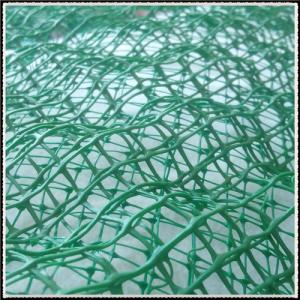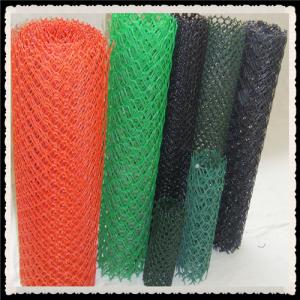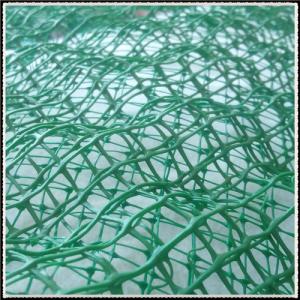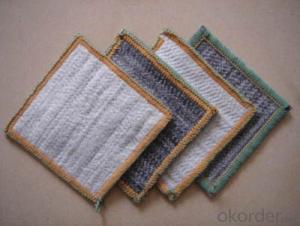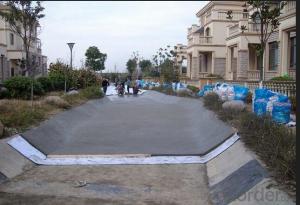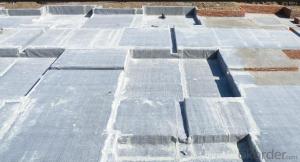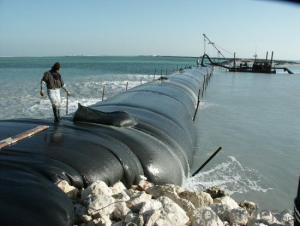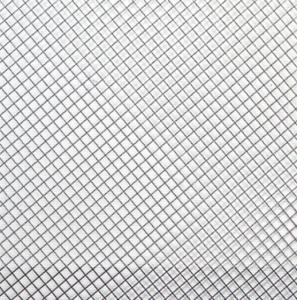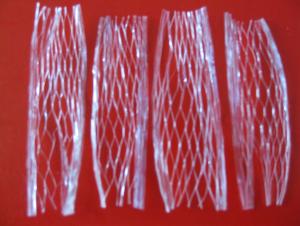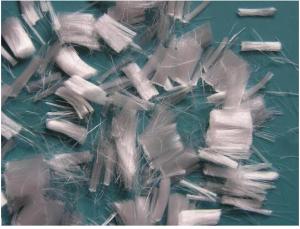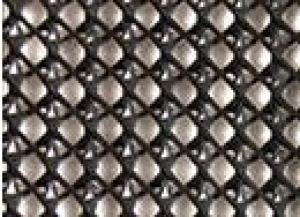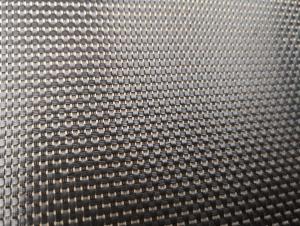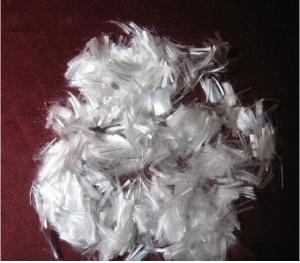Geonet or Geomat or Erosion Control Mat for Slope
- Loading Port:
- Qingdao
- Payment Terms:
- TT or LC
- Min Order Qty:
- 5000 m²
- Supply Capability:
- 100000 m²/month
OKorder Service Pledge
OKorder Financial Service
You Might Also Like
Geomat Description:
Geonet/Geomat is made from a kind of high-density polyethylene (HDPE) with properties of anti-aging and anticorrosion.
3D geomat erosion control mat is a kind of high polymer synthetic material made of 3D mesh structure, quality of a material is loose, flexible, with 90% of the space can fill soil,sand,the roots of the plants are grown through them balanced, the growth of grass make gauze pad, turf, soil surface firmly together, because the plant roots can be extended into the surface of the 30-50 cm, so the formation of a solid layer of green composite coating.
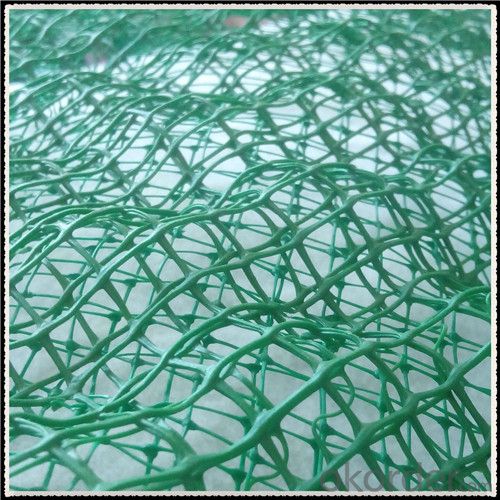
Geomat Specification:
CE121,CE131, CE151, DN1, HF10
Geomat Property:
1)Uniform structure, bear high pressure, improve the roadbed bearing capacity, enlarge its lifetime
2)Anti-aging, protect dam and rock surface from chemical erosion and sea water corrode.
Geomat Application:
1.Before the greensward grows, it prevents the surface of the land from the erosion of the wind and rain.
2 .Form compound protection layer with the vegetable, standing the wash-out of the high water level and large speed current.
3.Replace the concrete, asphalt, and block, using in the slope surface protection of roadway, railway, river-way, dyke, and the hillside, etc.
- Q:What are the benefits of using earthwork products in roadways?
- Using earthwork products in roadways offers several benefits. Firstly, these materials are cost-effective as they are readily available and often obtained from local sources. This reduces transportation costs and helps in minimizing project expenses. Secondly, earthwork products, such as gravel or crushed stone, provide a stable foundation and improve the overall strength and durability of the road. They also enhance drainage capabilities, preventing water accumulation and reducing the risk of damage caused by erosion or waterlogging. Additionally, these materials are environmentally friendly, as they can be reused or recycled, reducing the demand for new resources. Overall, incorporating earthwork products in road construction results in more efficient, cost-effective, and sustainable roadways.
- Q:How do geogrids aid in reinforcement of retaining walls in earthwork projects?
- Geogrids aid in the reinforcement of retaining walls in earthwork projects by providing additional strength and stability to the structure. These synthetic materials are typically made from high-strength polymers and are placed within the soil layers during construction. By interlocking with the soil particles, geogrids enhance the overall tensile strength of the wall, preventing soil movement and potential failure. This reinforcement mechanism allows for the construction of taller and more stable retaining walls, ensuring the long-term integrity and safety of the earthwork project.
- Q:What are the advantages of using geogrids in earthwork projects?
- Geogrids offer several advantages in earthwork projects, including improved soil stability, increased load-bearing capacity, and reduced construction costs. They provide reinforcement to the soil, preventing its movement and increasing its strength, which is especially beneficial in areas with poor soil conditions. Geogrids also distribute the loads more evenly, minimizing the settlement and deformation of the ground. Additionally, they are easy to install, require minimal maintenance, and can be used in a variety of applications, making them a cost-effective solution for earthwork projects.
- Q:What are the different applications of geotextile bags?
- Geotextile bags have various applications, including erosion control, shoreline protection, sediment filtration, construction site dewatering, flood control, and land reclamation. These bags are also used for slope stabilization, soil reinforcement, and as a barrier for retaining walls. Additionally, geotextile bags can be employed in environmental remediation projects, such as containment of contaminated soil or sludge.
- Q:Why beginners or senior civil engineering and technical personnel are required to continue to learn civil engineering materials
- Materials, including inorganic materials, cement, mortar, concrete, masonry and roofing materials, steel, synthetic polymer materials, asphalt materials, wood, insulation materials, sound-absorbing materials and sound insulation materials, decorative materials, new waterproof Materials, fireproof materials. This is of great practical significance in the construction and design
- Q:Can earthwork products be used for creating artificial waterfalls?
- Yes, earthwork products can be used for creating artificial waterfalls.
- Q:University of high polymer materials or civil engineering
- You may also know that civil engineering in recent years has been one of the highest employment rate of colleges and universities, and the employment of a very wide range of construction, design, supervision, management can be competent, and two and an employment gap is not It is recommended that you turn into, not very tired into the transfer
- Q:How are geotextile mats used in erosion control on slopes?
- Geotextile mats are used in erosion control on slopes by providing a protective barrier between the soil and the forces of erosion. These mats are typically made of synthetic materials and are placed on the slope to stabilize the soil and prevent its movement. The mats help to retain soil particles while allowing water to pass through, reducing the impact of rainfall and preventing erosion. Additionally, the mats promote the growth of vegetation, further enhancing the slope's stability and erosion resistance.
- Q:How do earthwork products contribute to dust control on construction sites?
- Earthwork products such as geotextiles and erosion control blankets play a crucial role in dust control on construction sites. These materials help to stabilize the soil, prevent erosion, and reduce the amount of loose particles that can become airborne. By providing a protective layer over the soil, earthwork products minimize dust generation, resulting in improved air quality and a safer working environment for construction workers and neighboring communities.
- Q:How do geosynthetic liners prevent seepage in irrigation canals?
- Geosynthetic liners prevent seepage in irrigation canals by acting as a barrier that prevents water from seeping through the canal walls or bottom. These liners are made of synthetic materials that are impermeable or have very low permeability, such as geomembranes or geotextiles. When installed properly, they create a watertight seal, reducing or eliminating the loss of water through seepage.
1. Manufacturer Overview |
|
|---|---|
| Location | |
| Year Established | |
| Annual Output Value | |
| Main Markets | |
| Company Certifications | |
2. Manufacturer Certificates |
|
|---|---|
| a) Certification Name | |
| Range | |
| Reference | |
| Validity Period | |
3. Manufacturer Capability |
|
|---|---|
| a)Trade Capacity | |
| Nearest Port | |
| Export Percentage | |
| No.of Employees in Trade Department | |
| Language Spoken: | |
| b)Factory Information | |
| Factory Size: | |
| No. of Production Lines | |
| Contract Manufacturing | |
| Product Price Range | |
Send your message to us
Geonet or Geomat or Erosion Control Mat for Slope
- Loading Port:
- Qingdao
- Payment Terms:
- TT or LC
- Min Order Qty:
- 5000 m²
- Supply Capability:
- 100000 m²/month
OKorder Service Pledge
OKorder Financial Service
Similar products
New products
Hot products
Hot Searches
Related keywords
